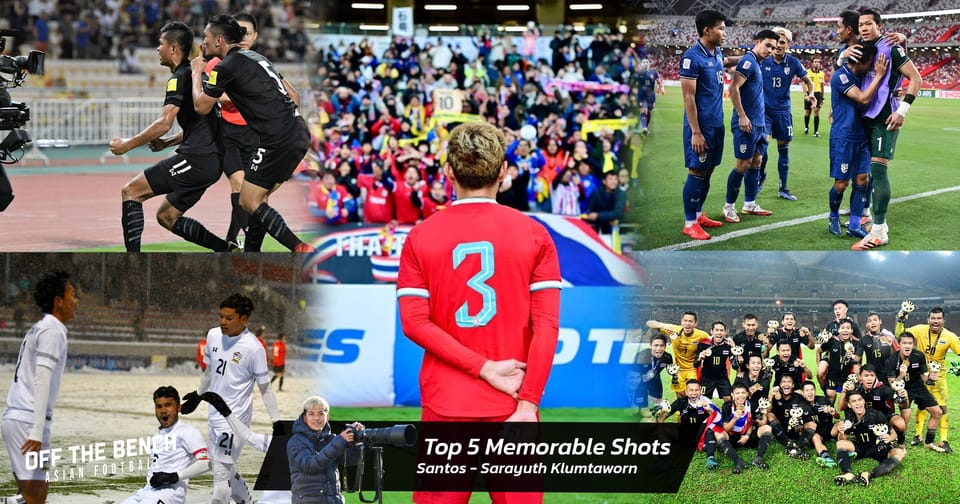Inside the World of Thai Beach Soccer
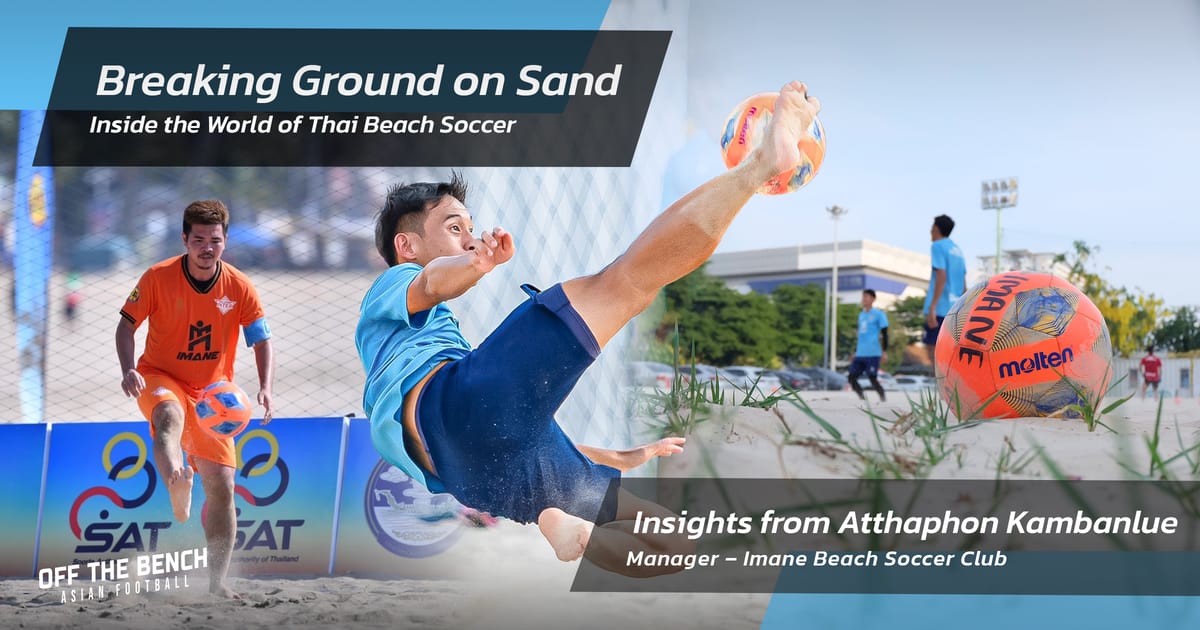
Opening the World of Beach Soccer: Through the Eyes of "Sergeant Tong," Thailand’s Pioneer in Japan’s Pro League
When people think of beach soccer, they might imagine a casual seaside game for fun. But this high-energy sport is far more than just entertainment. It combines speed, athleticism, skill, and flair, creating a unique experience vastly different from traditional football.
Today, it’s a recognized professional sport with dedicated leagues, passionate fanbases, and global competitions.
In Thailand, beach soccer is still under the radar. However, there are pioneers working tirelessly to grow the sport—and one of them is Sergeant Atthaphon Kambunlue, known affectionately as "Sergeant Tong."
He holds the distinction of being the first Thai player to compete professionally in Japan’s beach soccer league and now continues to push the sport forward as a team manager. 🇯🇵
Who Is Sergeant Tong?

Atthaphon began playing beach soccer in 2012 and eventually earned a place on Thailand’s national team. In 2018, he made history by becoming the first Thai beach soccer player to turn professional in Japan, joining Tokyo Lequios.
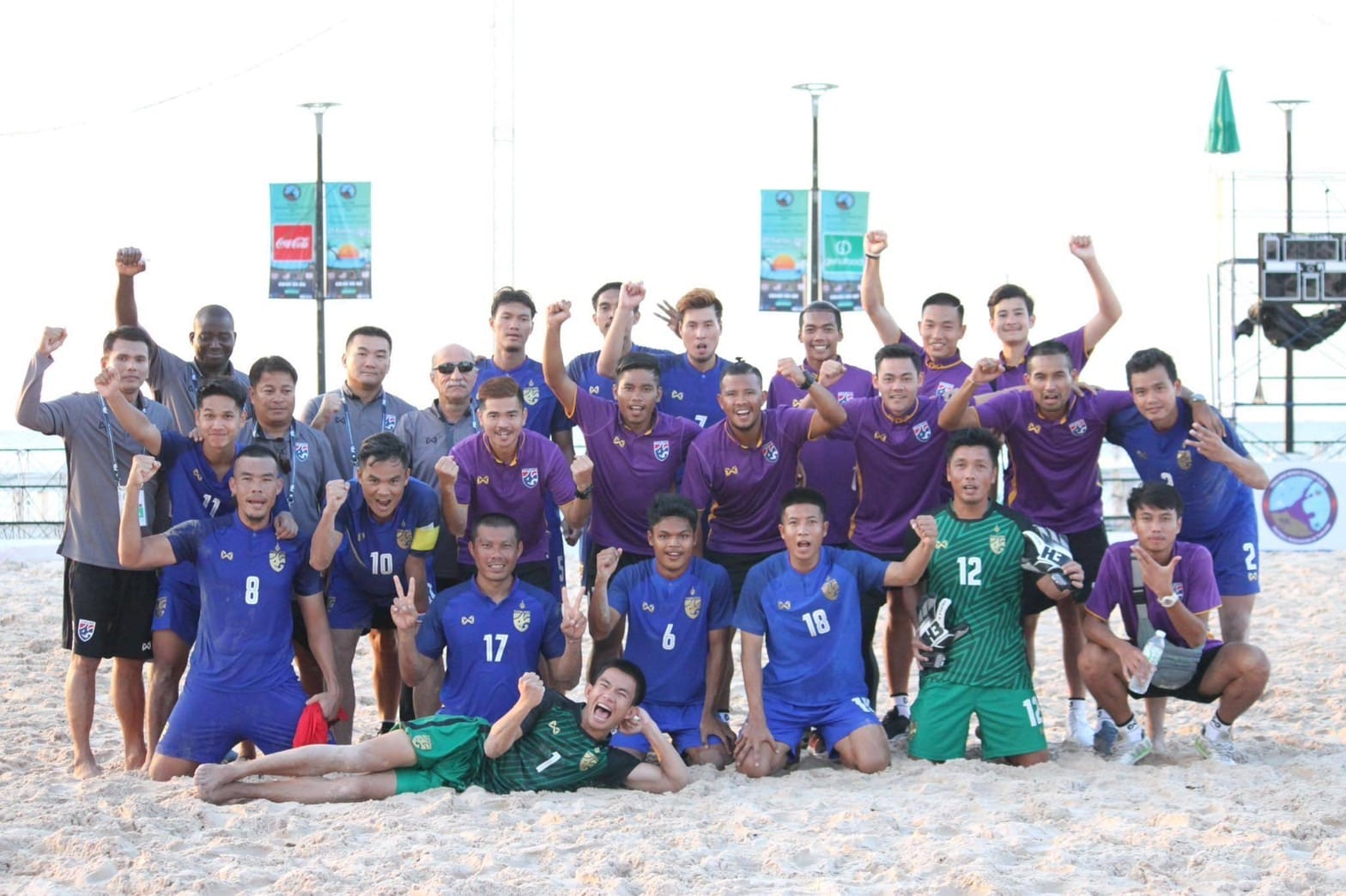
Later, he also played for Akashi (2020) and Ryukyu United (2022), spending years in the Japanese league—living, training, and competing entirely on his own.

His journey began after a standout performance at the 2017 Busan Beach Soccer tournament in South Korea, where his skills caught the attention of Akashi's players. After the event, he was invited to join the Japanese club—marking the start of his international beach soccer career.
"I played for Tokyo with nine national team players out of eleven in the squad. That says a lot about the level of the team,” Sergeant Tong recalls.
"Once the Japanese accept you, they tend to accept others who follow in your footsteps."
Know the Game: Rules and Basics of Beach Soccer
Even if you're unfamiliar with beach soccer, you can still enjoy watching it. The sport is highly entertaining and easy to follow, but knowing a few rules can enhance your experience:

- The Pitch: Made of fine, clean sand—not regular beach sand. It’s around 26–28 meters wide and 35–37 meters long, with goals 5.5 meters wide and 2.2 meters high. There’s no offside rule.
"For international-level beach soccer competitions held on natural beaches, the stadium must be equipped with stands on all four sides. The stand facing the sea, in particular, serves an extra purpose—it helps block wind from entering the field."
- Team Format: Five players on each side, including the goalkeeper. Up to seven substitutes allowed, with unlimited substitutions at any time.
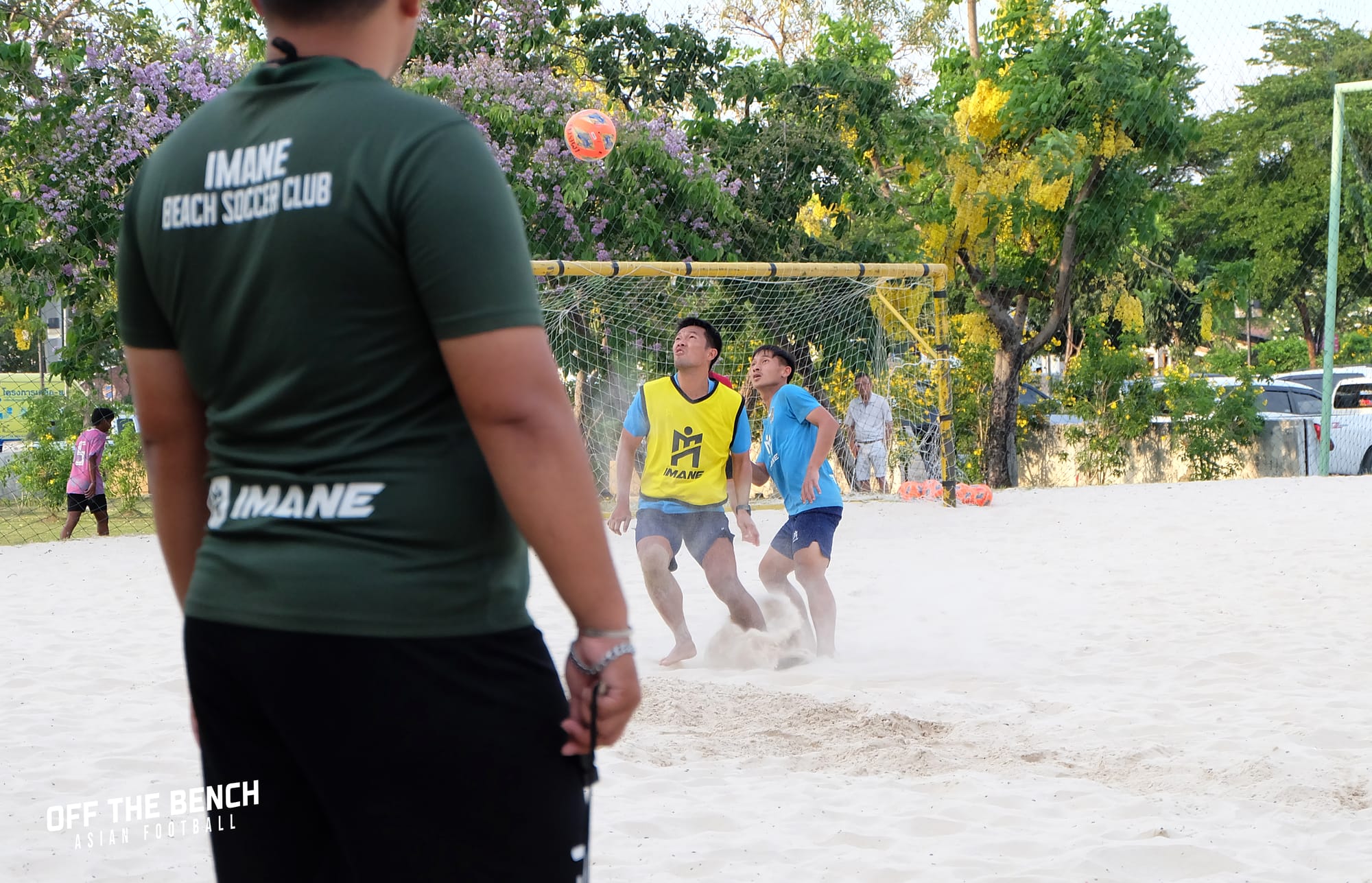
"In Thailand, where the beach soccer league is still developing, many of our players originally came from full-size football or futsal. They’ve transitioned into beach soccer because they enjoy it and see a future here," he explained.
"But once you commit to a professional league and the season begins, you’re not allowed to switch between formats. That means no playing 11-a-side, no futsal, not even semi-pro local tournaments.
"If you’re caught, there are penalties. It’s about maintaining the integrity and professionalism of the league."
- Match Duration: Three 12-minute periods (36 minutes total). The clock stops for fouls and when the ball is out of play.
- Gameplay Rules:
- No back-passes to the keeper using hands unless the ball touched an opponent.
- No defensive walls during free kicks; the fouled player must take the kick unless injured.
- Red cards reduce a team to four players for 2 minutes or until a goal is conceded.
- Kick-ins or throw-ins are allowed from the sidelines—with prior notice to the referee.

"Whether we throw or kick the ball back into play depends on the players we have on the field. For example, if we have a tall striker who's strong in the air and good at bicycle kicks, we usually go for the throw," he explained.
"Keeping the ball in the air is a big advantage in beach soccer. Once it hits the sand, it’s much harder to control—it takes more effort, more technique, and you can’t really predict how it’s going to bounce."
- Tactics: Similar to traditional football but scaled down—formations like 1-2-1 or 3-1 are common.
- The Ball: Lighter and softer than regular footballs, designed for barefoot play. Only certified beach soccer balls (e.g., Molten, Adidas, Puma) are allowed.
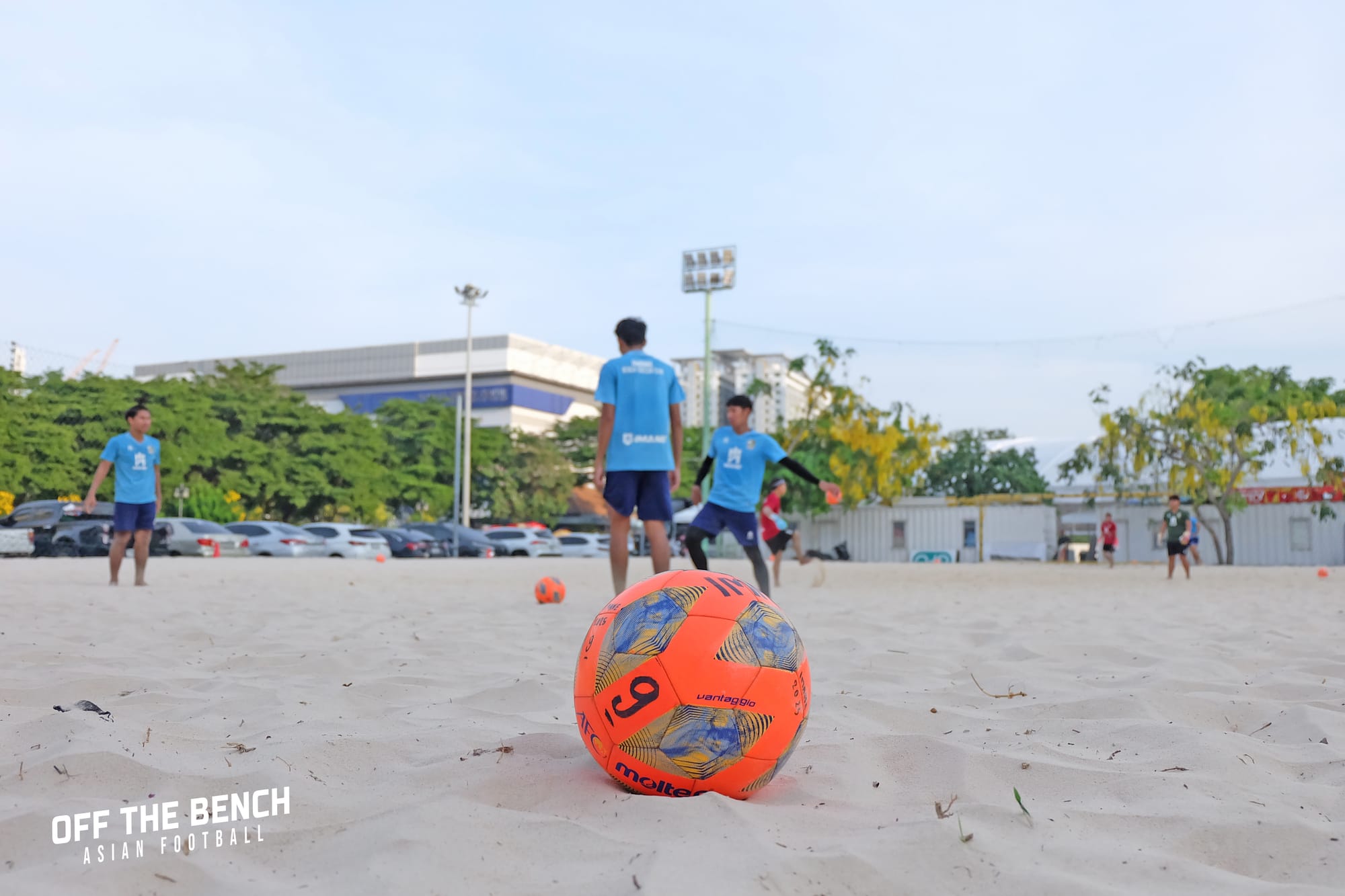
"In Thailand, these balls are expensive and must be imported," says Sergeant Tong. “But they’re crucial for proper play."
Thailand Has a League Too
Thailand launched its own professional beach soccer league in 2017 under the name "MOL Beach Soccer Thai League"—the first of its kind in Southeast Asia.
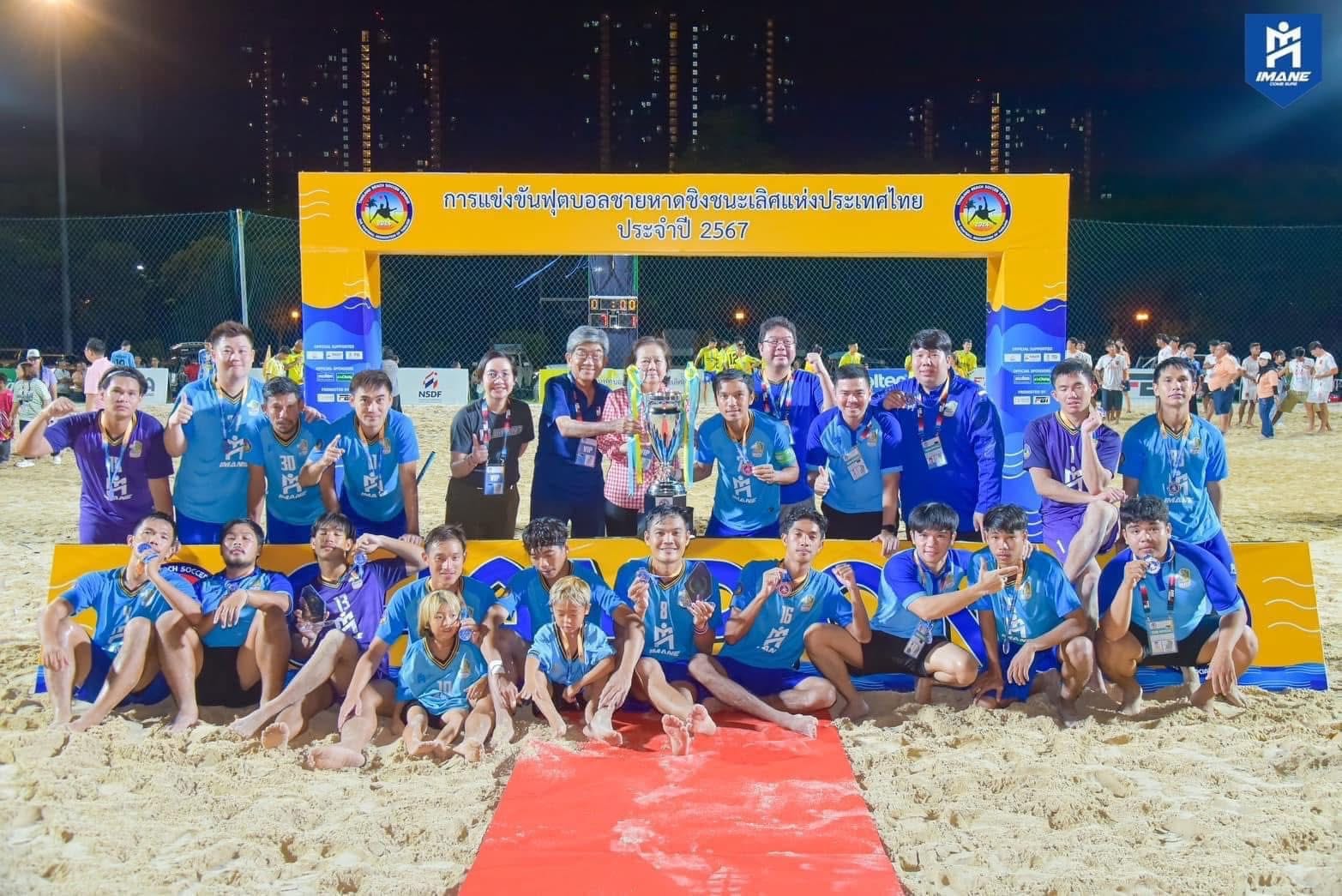
In the 2024 season, "IMANE Beach Soccer Club," managed by Sergeant Tong, claimed their first national championship title. Veteran striker Komkrit Na-nan also secured the Golden Boot with 28 goals.

The Fun Is Just Beginning!
The Thailand Beach Soccer Championship runs annually from June to September, featuring eight teams competing in a home-and-away round-robin format (14 matches each).
Matches are held at the beach soccer stadium in Huamark, Bangkok—next to the indoor stadium—where up to four exciting matches take place each day from late afternoon into the evening.
Meet "IMANE Beach Soccer Club"
Under the management of Sergeant Tong and the leadership of club executive Mr. Takkasit "Boss Tai" Jittivanich, IMANE Beach Soccer Club has become a model for professional development.
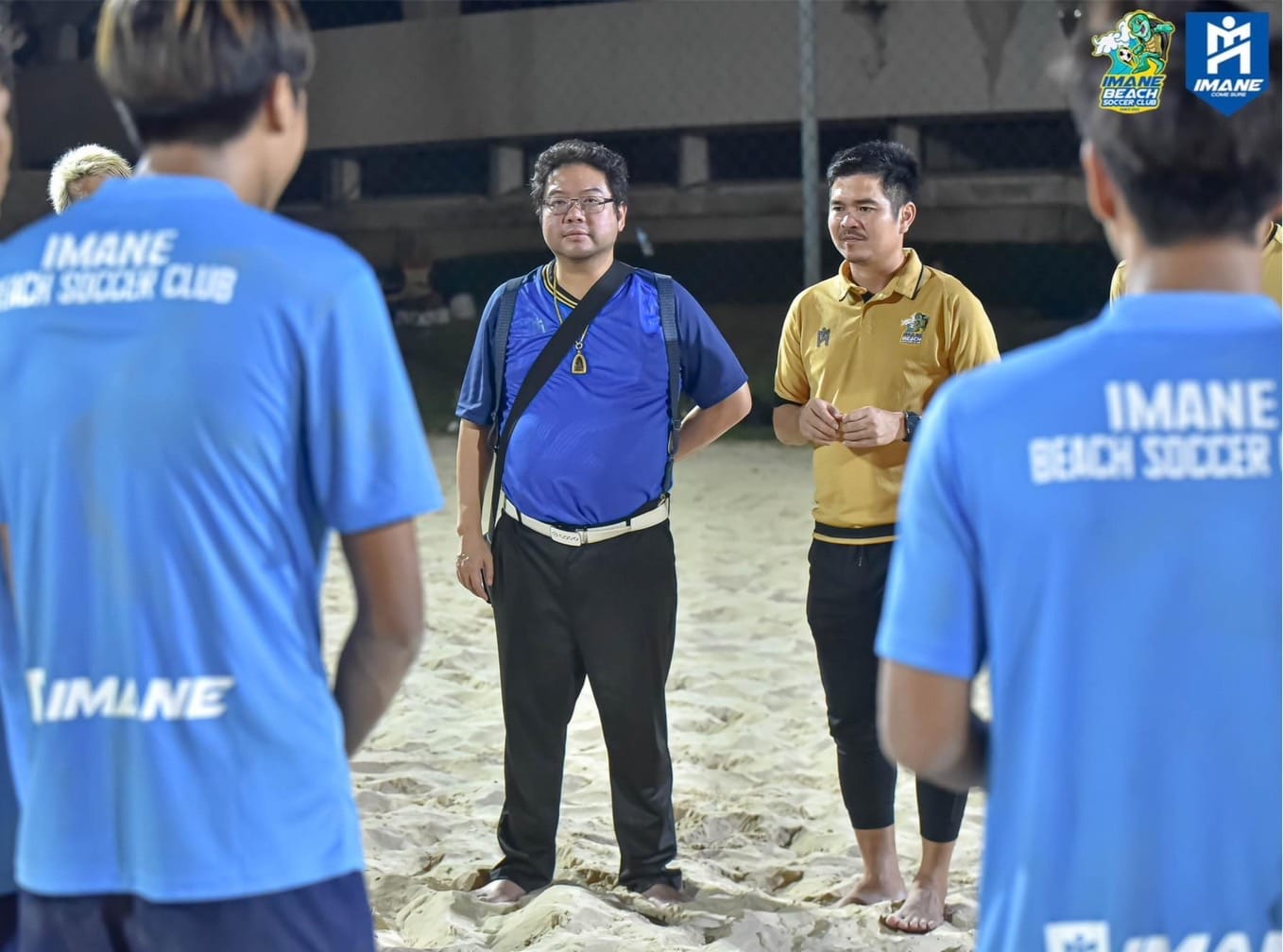
All players and coaching staff are under contract, with licensed coaches certified by the AFC (Asian Football Confederation) Beach Soccer Program.
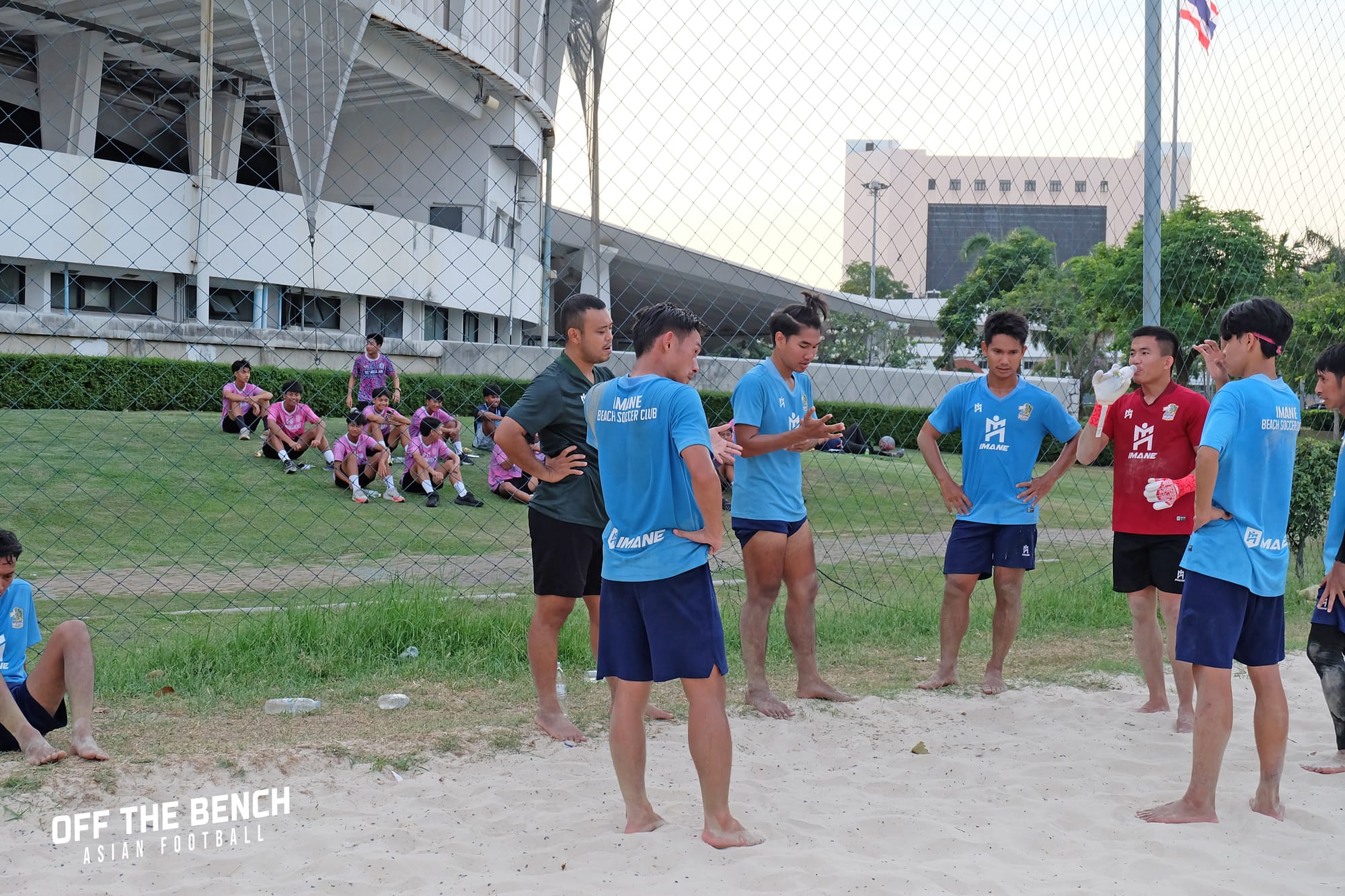
"We want to build a professional beach soccer team from the ground up,” Tong explains. “That means investing in youth players who choose beach soccer from the start—not just converting players from futsal or field football."
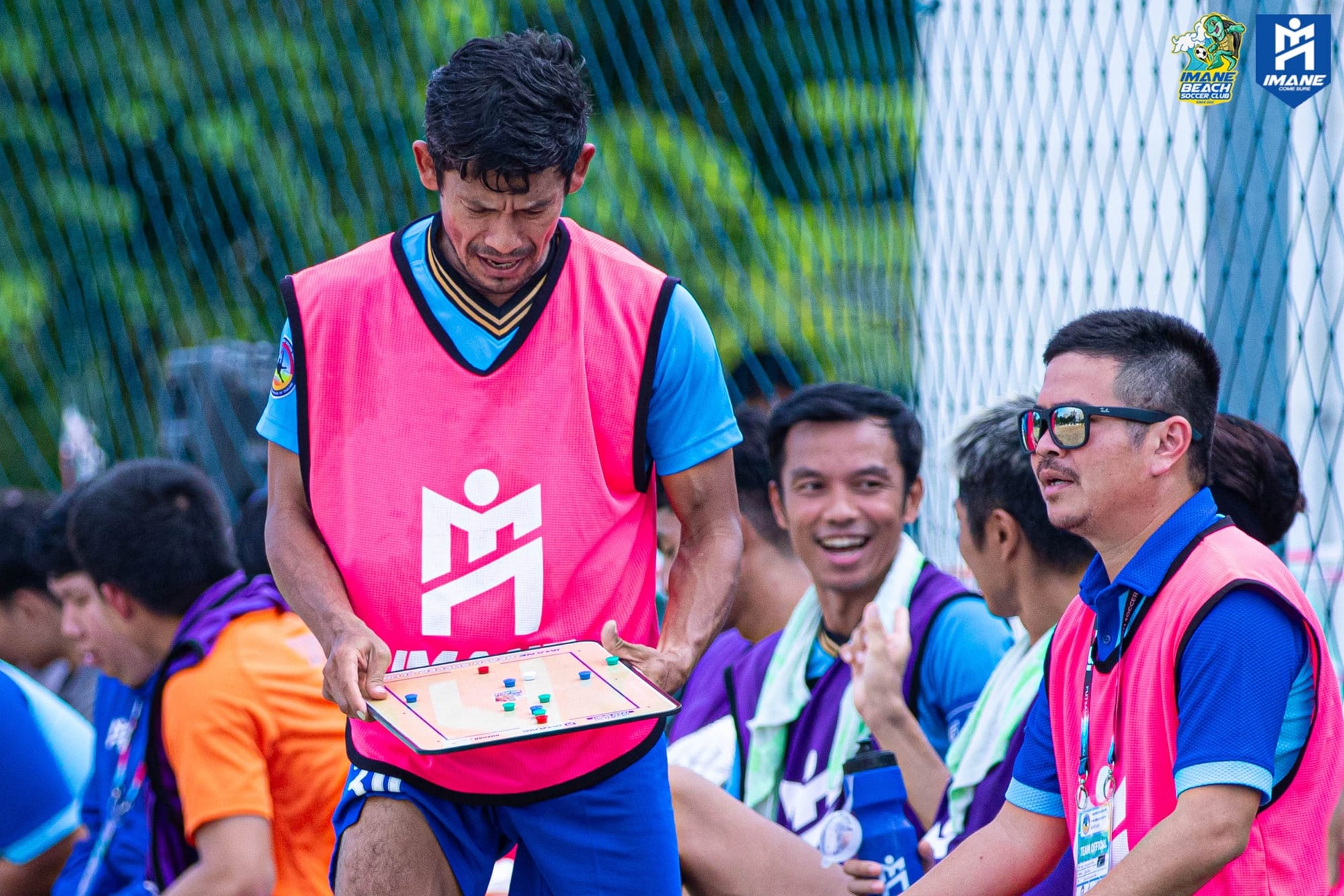
These players receive fundamental training in their first year. By the second year, they compete in domestic matches and may progress to international competitions based on their ability.
"If they go through the full process, they can eventually make the national team," Tong notes.
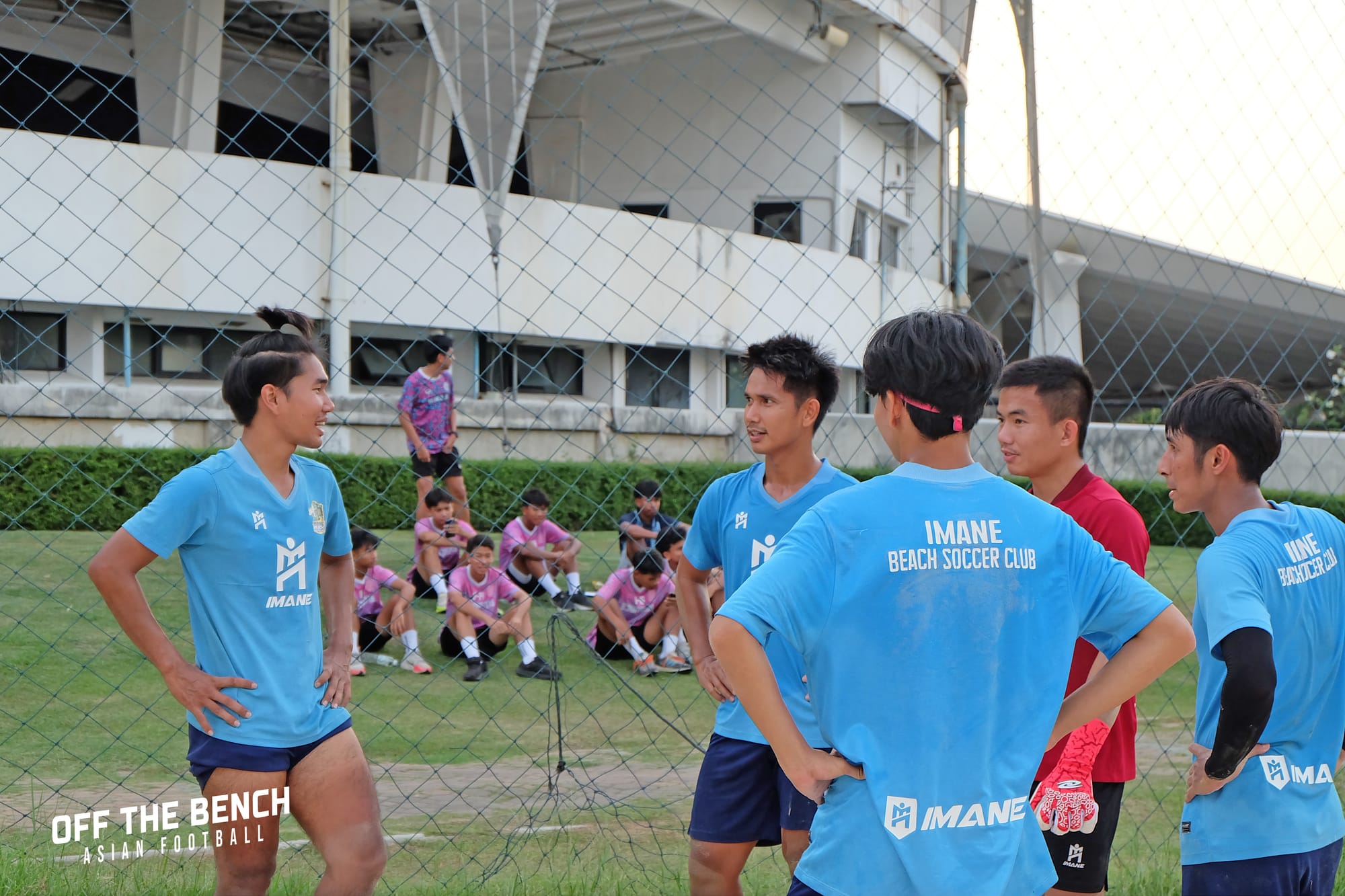
"We don’t yet have a true academy system, but we’re building toward it."
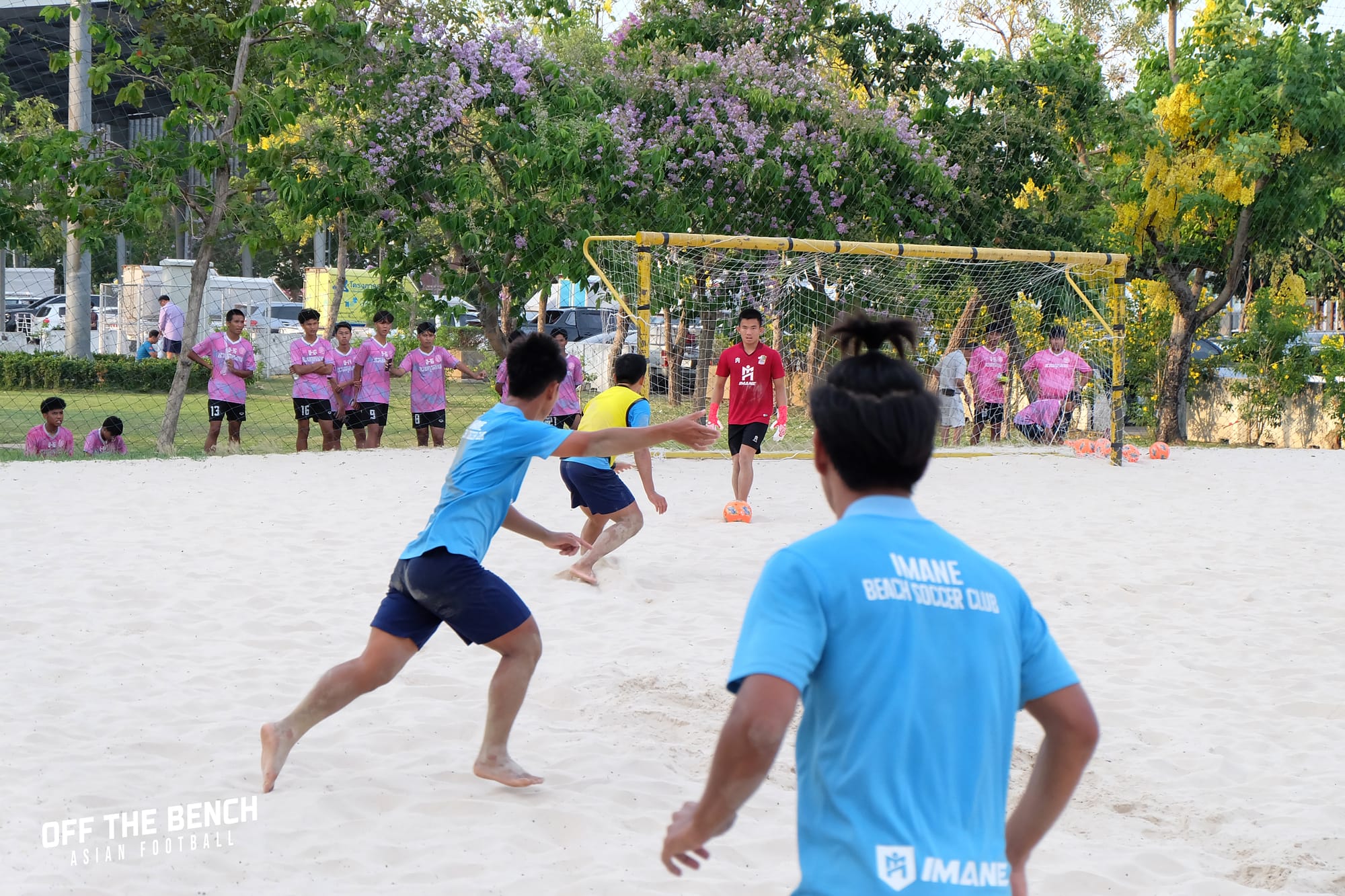
Bringing in Global Expertise
To raise the bar, IMANE frequently invites top international players to train with the team and share their knowledge. These have included Marcel Nowak (Germany), Mantas Makutunovičius (Lithuania), and Pak Ling (Norway).
"Watching them in person is the only way to really learn,” says Tong. “The basics, ball control, passing—you can’t teach these just by words. You have to see how world-class players do it."
The Road Ahead for Thai Beach Soccer
While Thailand is working hard to professionalize its beach soccer scene, major challenges remain. These include limited funding, lack of media coverage, too few standard fields, and an underdeveloped league structure. But Tong is hopeful.
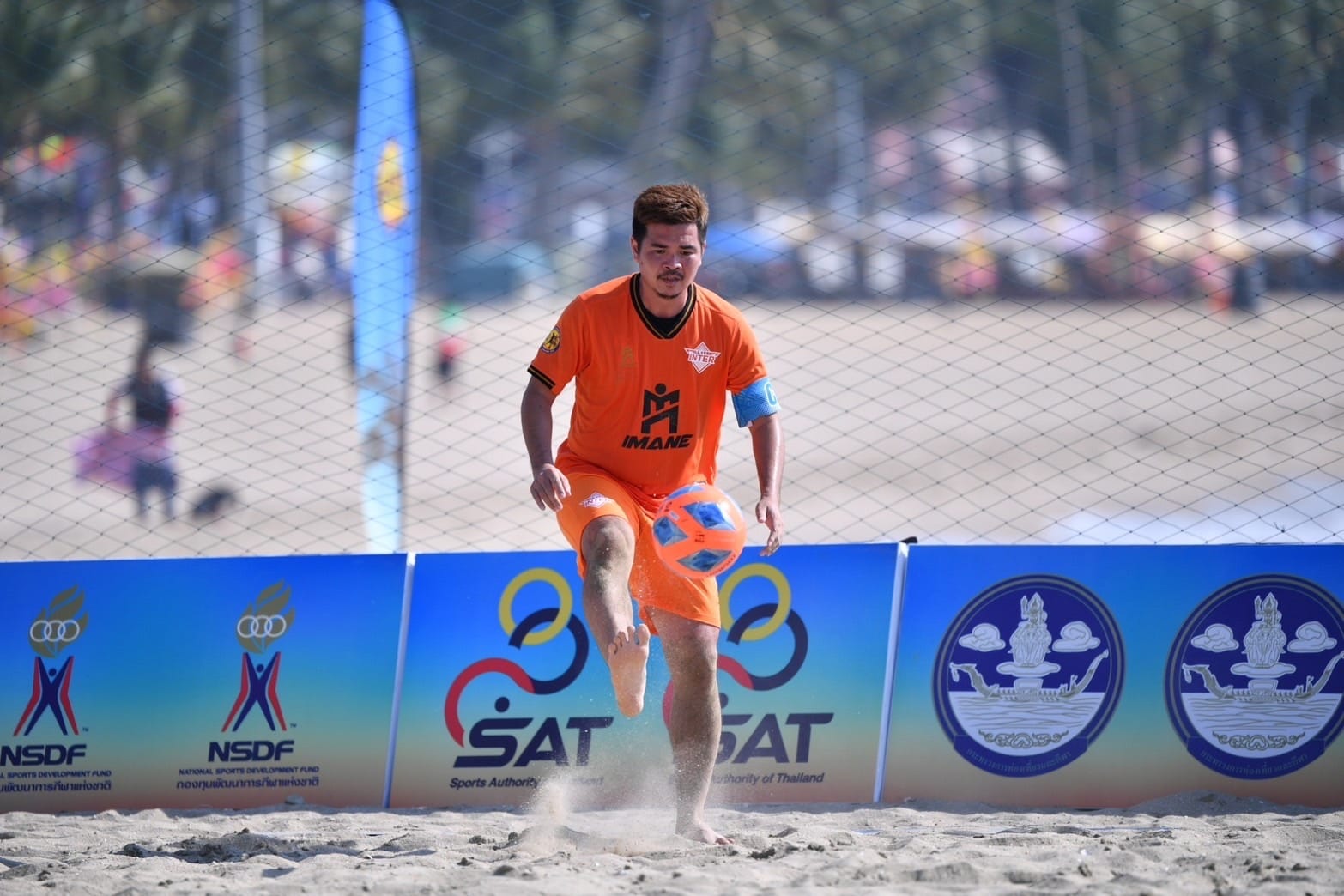
"Beach soccer is popular overseas and has massive potential here. People love the excitement—especially the acrobatic bicycle kicks. It’s beautiful, unpredictable, and hard to defend against," he says.
"If more people give it a chance, they’ll fall in love."

You Can Help Too
Fans play an important role in growing beach soccer in Thailand. Watching games, sharing content, and simply supporting the players can make a huge difference.
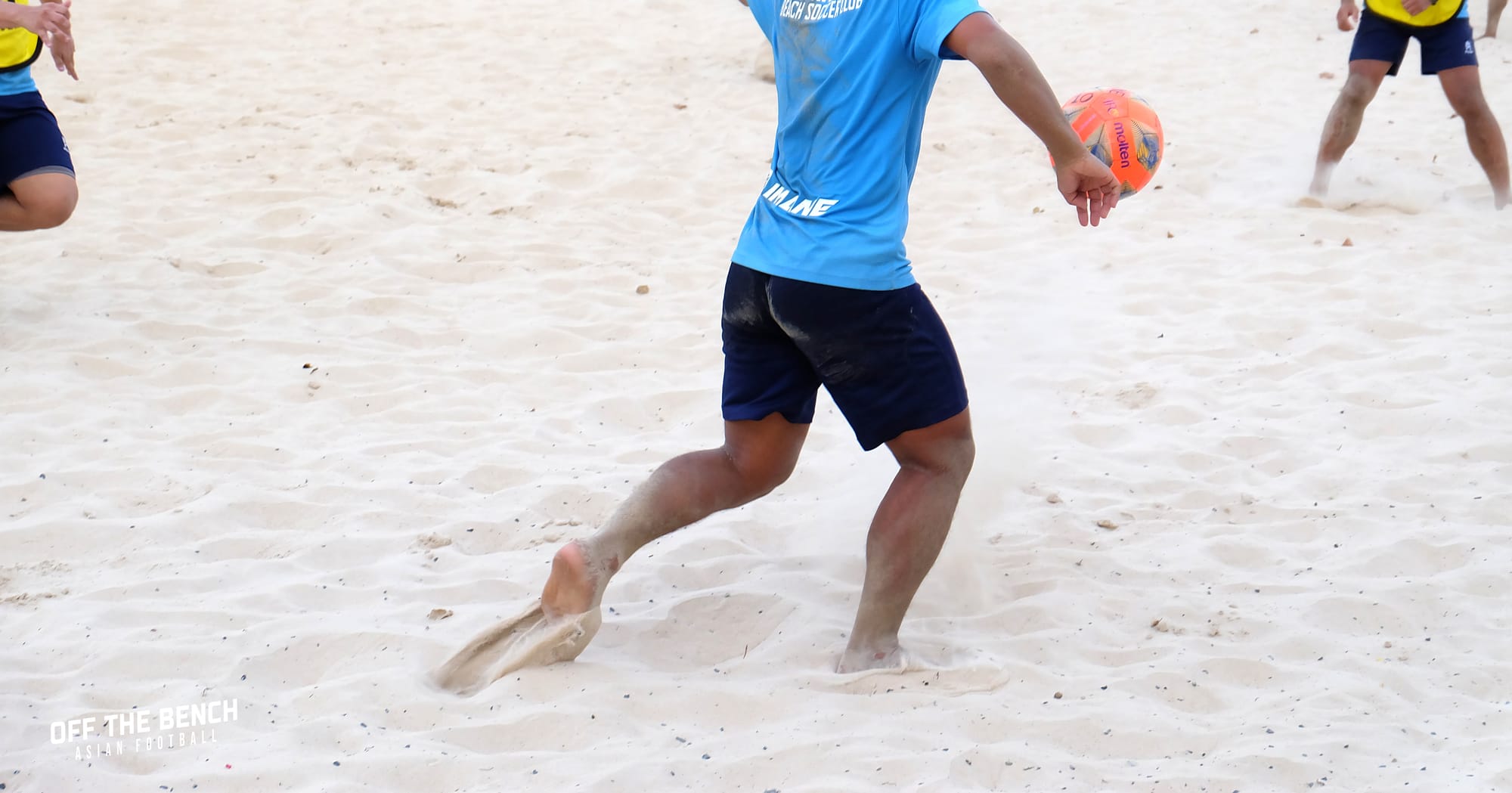
One great opportunity to get involved is the upcoming Beach Soccer League 2025, starting June 21, 2025. Don’t miss it—you might just discover your new favorite sport.
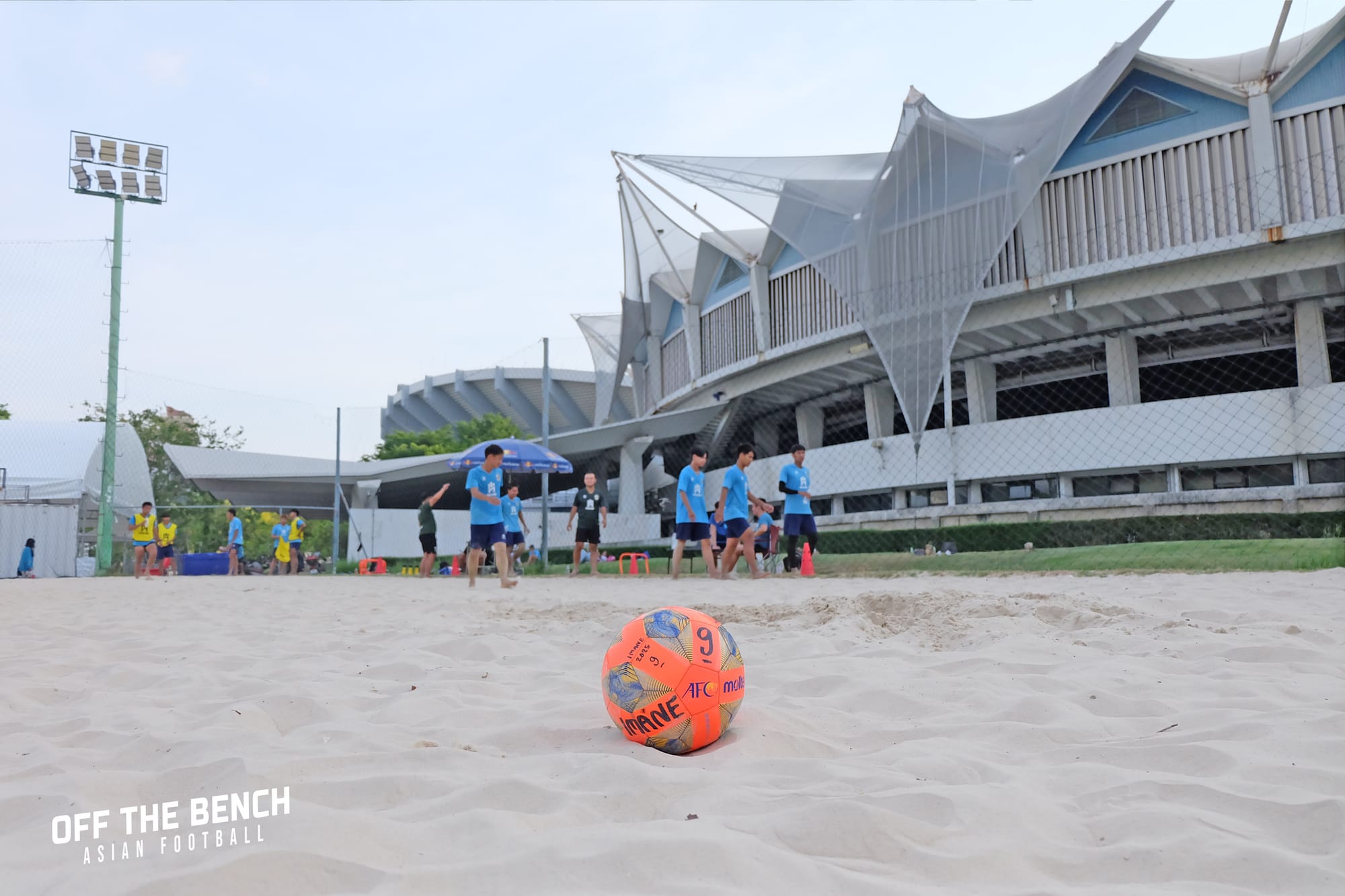
Follow the journey:
- 📌 Thailand Beach Soccer: Facebook
- 📌 IMANE Beach Soccer Club: Facebook, Instagram, TikTok: IMANE Beachsoccer Club
- 📌 Sergeant Tong: Facebook: Tong Atthaphon, Instagram: Tong_Atthaphon


